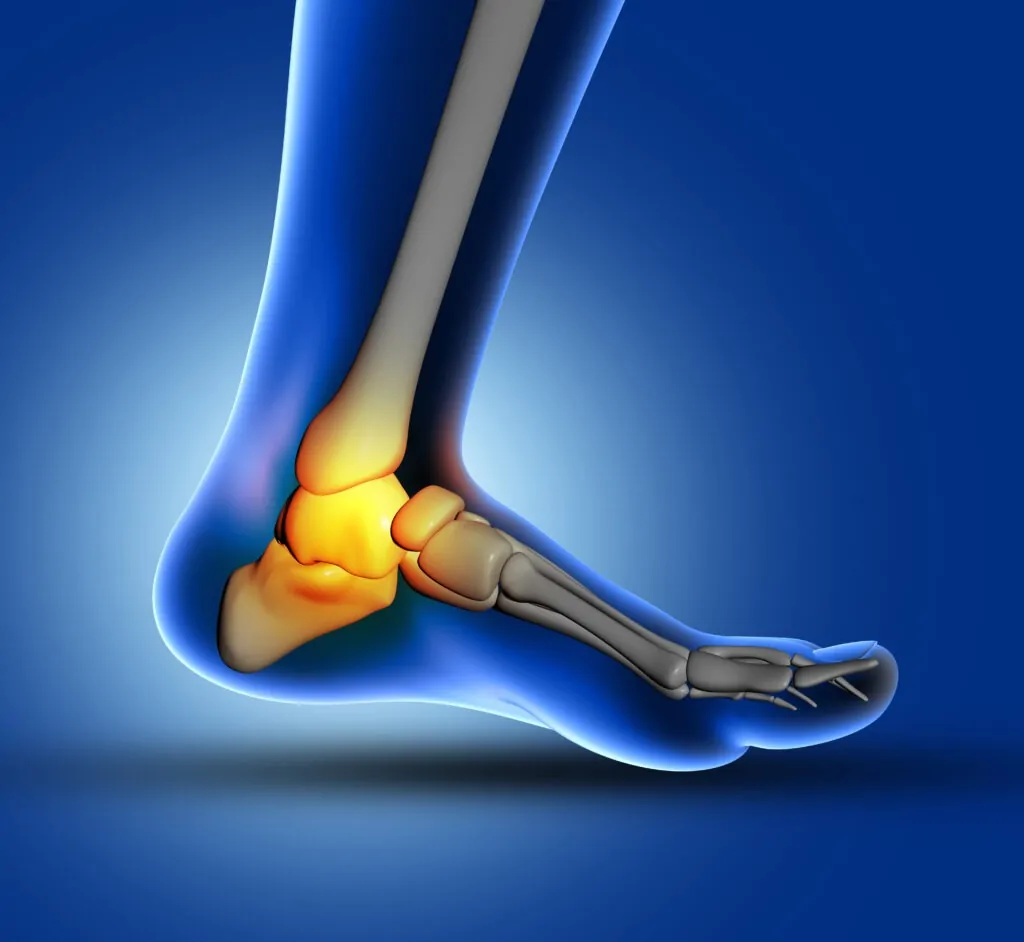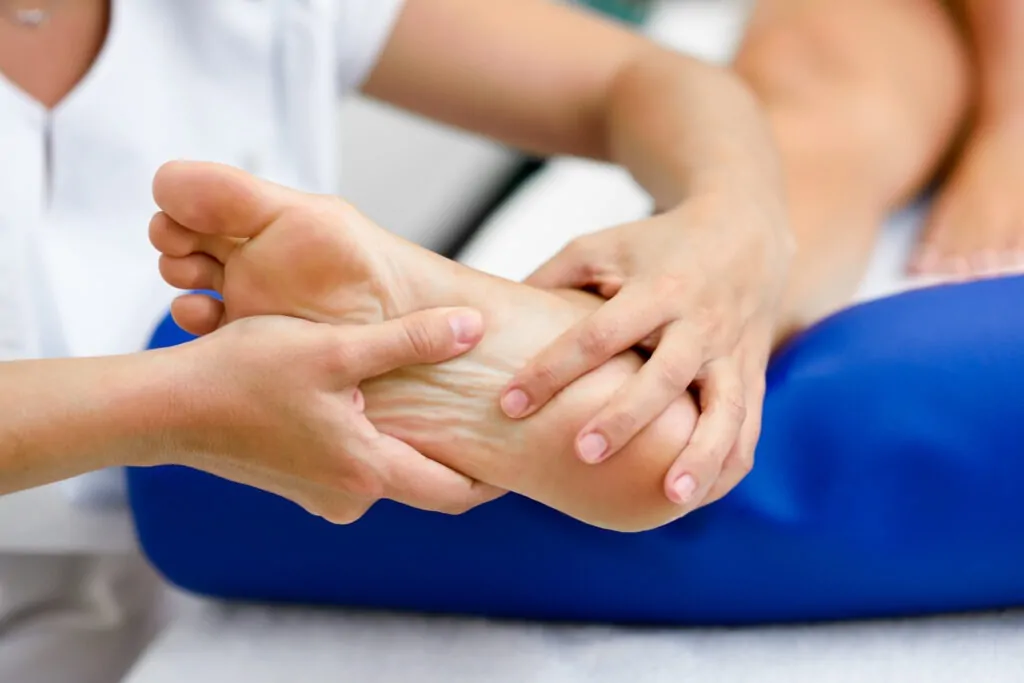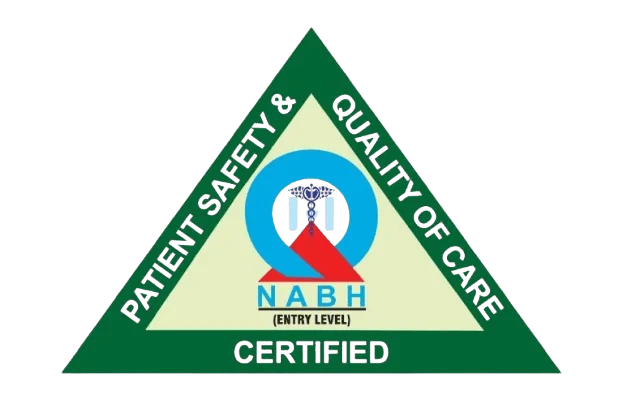Step into Comfort with Advanced Foot & Ankle Care

Your journey to pain-free steps begins here at Pure Ortho Hospitals
Your foot and ankle are complex structures made up of 26 bones, 33 joints, and over 100 ligaments, tendons, and muscles all working together to provide stability, balance, and movement. When any part of this system is injured or affected by disease, it can cause pain, limit your mobility, and reduce your quality of life.
Our Foot & Ankle Department offers expert care for both simple and complex problems ranging from sprains and sports injuries to deformities, arthritis, and diabetic foot complications. With a multidisciplinary team and advanced technology, we focus on restoring function and helping you live pain-free.

Common Foot & Ankle Problems
We treat a wide range of conditions, including:
- Heel & Arch Disorders
Plantar fasciitis, heel spurs, flatfoot, high arch pain, Achilles tendonitis.
- Sports & Overuse Injuries
Ankle sprains, ligament tears, tendon injuries, stress fractures.
- Arthritis & Degenerative Conditions
Osteoarthritis, rheumatoid arthritis, post-traumatic arthritis affecting the ankle and foot joints.
- Deformities & Structural Issues
Bunions, hammertoes, clubfoot, congenital or acquired deformities.
- Trauma & Fractures
Simple and complex fractures, dislocations, and crush injuries of the foot and ankle.
- Nerve & Circulatory Disorders
Neuropathy, gout, peripheral vascular disease causing foot pain and swelling.
Healthy Habits for Stronger Bones & Joints
Surgical Treatments
- Minimally Invasive Surgery – Arthroscopy and endoscopic procedures for ligament or tendon repair.
- Fracture Fixation & Reconstruction – Complex trauma management with advanced implants.
- Corrective Surgery – For bunions, hammertoes, flatfoot, and alignment problems.
- Joint Replacement & Fusion – Ankle replacement and arthrodesis for advanced arthritis.
- Reconstructive & Limb Salvage Procedures – For severe deformities or diabetic complications.
Non-Surgical Treatments
- Medications for pain, inflammation, or disease control
- Custom orthotics, braces, and footwear modifications
- Physiotherapy and rehabilitation programs
- Corticosteroid and regenerative injections (PRP, stem cell therapies)
- Wound care and preventive screening for diabetic patients
Why Early Evaluation Matters
Foot and ankle problems are often ignored until they become severe. Ignoring symptoms like persistent pain, swelling, stiffness, or numbness can lead to:
- Chronic instability and repeated injuries
- Progression of arthritis and joint damage
- Complications in diabetics, including risk of amputation
- Permanent deformities and mobility loss
Early diagnosis and treatment can prevent long-term disability and improve overall quality of life.
Book An Appointment
Our Expert Orthopedic Specialists

Dr. G. UDAY SEKHAR REDDY
MBBS,MS Ortho, MCh Ortho

Dr. V. S. ABHILASH KUMAR S
MBBS, MS (Ortho), FIJR,FISS (S.Korea, USA)

Dr. SAI KARTHIKEYA BADRI
MBBS, D. Ortho, (DNB)

DR. PUDARI MANOJ KUMAR
MBBS, MS ORTHO, FIJR, FIRJR

Dr. L. Sreeram
MPT (Ortho), FDOR, MIAP

Dr. L. SRI DHARANI
BPT, MIAP, PTOTA (CANADA)

Dr. RNV VAMSHI KRISHNA
MBBS,MD, MRCP (UK)

Dr. KRANTHI KUMAR REDDY
MBBS,MD, C.Diab

Dr. Sai Krishna C.S
MBBS, MS (Orthopedics)

Dr. B. VISHAL
MBBS, MS (Gen. Surgery), DNB, MRCS (England), MCh (Vascular Surgery)

Dr. D RAGHUVEER REDDY
MBBS, MS (General Surgery), MCh (Plastic & Reconstructive Surgery)

Dr. B Jayanth Varma
MBBS, DIPLOMA IN ANAESTHESIOLOGY

Dr. Goutham Balachandra Reddy
MD (Anesthesiology), Fellowship in Critical Care Medicine, IAFM
Frequently Asked Questions (FAQs)
1. When should I see a doctor for foot or ankle pain?
You should consult a specialist if you experience pain that lasts more than a few days, swelling that doesn’t improve with rest, difficulty walking, numbness or tingling in your feet, or recurring ankle sprains. Early diagnosis helps prevent complications.
2. Can foot and ankle problems be treated without surgery?
Yes. Most conditions are managed with non-surgical treatments such as physiotherapy, orthotics, medications, or lifestyle changes. Surgery is recommended only when conservative methods fail or in cases of severe injury or deformity.
3. What are common causes of heel pain?
The most common cause is plantar fasciitis, but heel pain can also result from heel spurs, Achilles tendonitis, flat feet, arthritis, or nerve problems. A proper evaluation helps identify the exact cause and treatment.
4. How are diabetic foot problems managed?
Diabetic patients require regular foot check-ups to prevent ulcers, infections, and circulation issues. Our team provides preventive care, wound management, vascular support, and surgical intervention when needed.
5. How long does recovery take after foot or ankle surgery?
Recovery depends on the type of procedure. Minor surgeries may take a few weeks, while complex reconstructions can take several months. Rehabilitation with physiotherapy is crucial for regaining mobility and strength.

